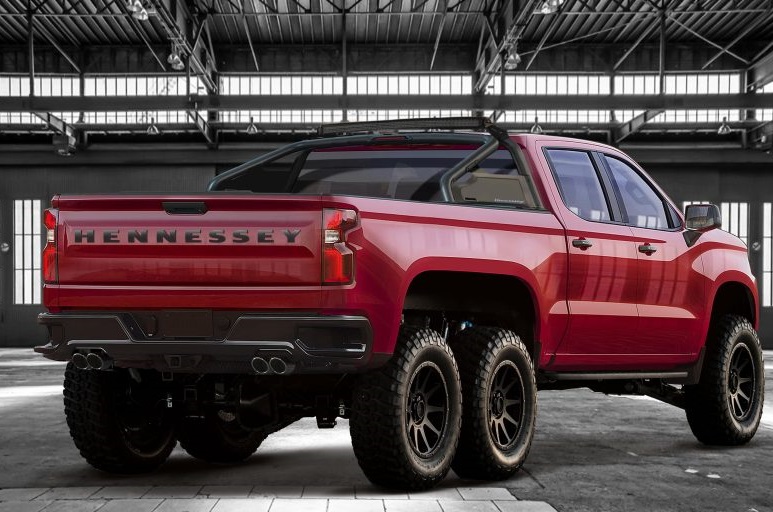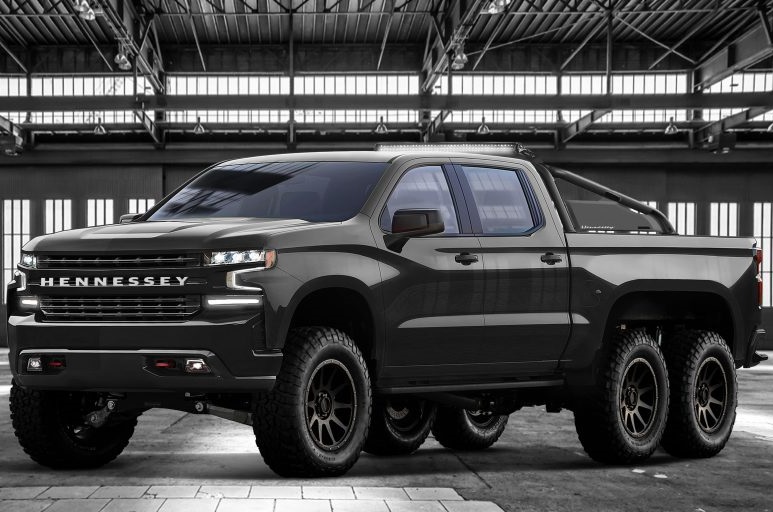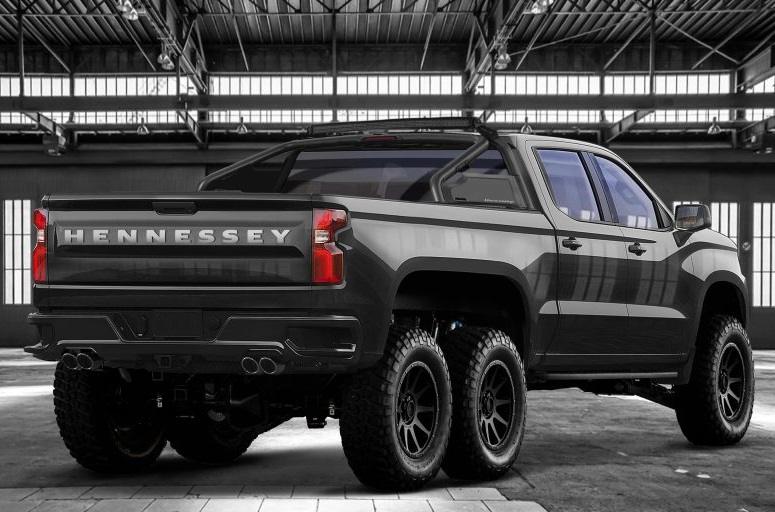Though it likely didn’t know it at the time, Mercedes-Benz started a fad when it introduced the monstrous G63 AMG 6×6 in 2013. Five years later, American tuner Hennessey is keeping the trend alive with a six-wheeled version of the brand-new 2019 Chevrolet Silverado that’s starting to arrive in showrooms.
Meet the aptly named Hennessey Goliath 6×6. It started life as a Trail Boss Z71 model — a high-zoot variant designed with off-roading in mind — and received a third axle. Adding an additional pair of wheels required developing an entirely new suspension system, and Hennessey notes it lifted the truck by eight inches to help it drive right over anything that dares stand in its way.
The upgrades continue under the hood. The Goliath 6×6 retains the Silverado‘s 6.2-liter V8 engine but gains a 2.9-liter supercharger that bumps its output to a Dodge Charger Hellcat-like 705 horsepower at 6,200 rpm and 675 pound-feet of torque at 4,200 rpm. It spins the six wheels through an automatic transmission. We usually don’t list 0-to-60-mph times for trucks, but a beast like this one deserves an exception. It performs the benchmark sprint in the mid-four-second range, which is about on par with the time posted by an entry-level Porsche 911 and faster than many hot hatches on the market.
Hennessey also added a model-specific grille, a roll bar in the bed, and 20-inch wheels wrapped by BF Goodrich 37-inch off-road tires. There’s no word yet on whether the tuner touched anything inside the truck.
The Goliath 6×6 isn’t merely a wild concept car. It’s headed for production, albeit with a huge asterisk. Production is strictly limited to 24 examples worldwide and each one starts at $375,000 including the price of the donor truck. You could buy a nicely optioned McLaren 720S for that price and still have money left over for a set of track tires. Buyers can venture even deeper into supercar territory by selecting extra-cost options like Brembo brakes on all three axles — which we suspect you’ll probably need — a custom-designed interior, and an upgraded V8 engine tuned to deliver 808 horsepower.
The good news is that the conversion is approved by Chevrolet. Buyers can order the Goliath 6×6 at participating Chevrolet dealers and rest assured knowing that each truck is covered by a three-year, 36,000-mile warranty.







